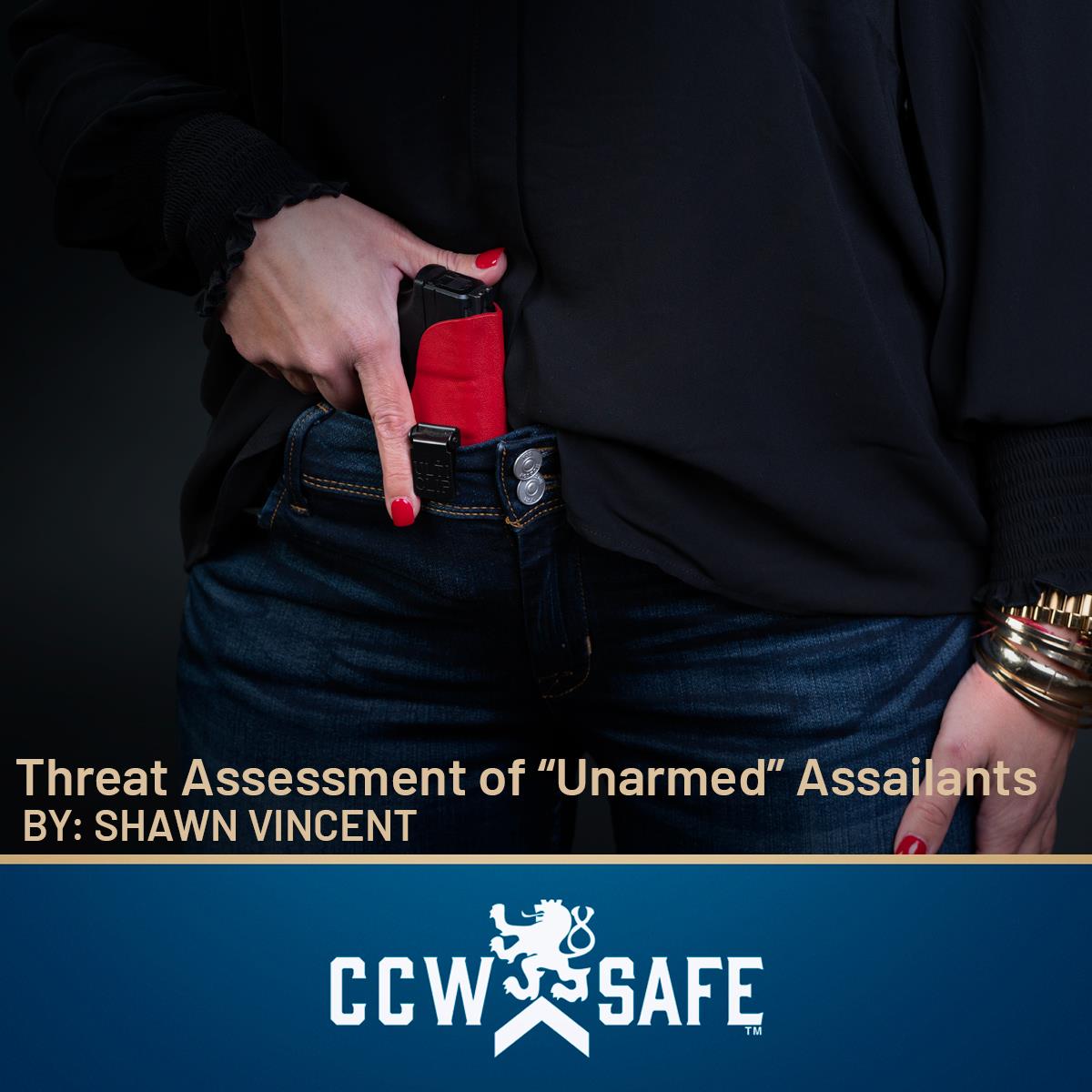
Posted on May 27, 2022
Threat Assessment of “Unarmed” Assailants
Here is some good news for concealed carriers: armed defenders who use deadly force against gun-wielding attackers are rarely prosecuted. Unless there is some evidence of mutual combat – or if the defender was the initial aggressor – law-abiding citizens who deploy deadly force against armed robbers, rapists, kidnappers, and carjackers are almost always found justified. The majority of the cases we have explored where the armed defender faced prosecution involved unarmed attackers or attackers who were armed with something other than a gun.
Deadly force is justified only when a defender faces the imminent threat of serious bodily injury or death. When an attacker presents a firearm, the imminence of a severe threat is clear. When the attacker is unarmed or armed with some non-traditional weapon – such as a screwdriver, for instance – the imminent severity of the threat is not so cut-and-dried. We know, of course, that fists can be deadly weapons, and nationally renowned firearms instructor Tom Givens reminds us that “a screwdriver is a hand tool – unless I stick it in your chest.”
Assessing the threat posed by an unarmed attacker can be difficult, and it poses a real problem for concealed carriers. We call it “the armed defender’s dilemma.”
Part of the armed defender’s dilemma is that, in self-defense, the defender’s use of force must be proportional to the attacker’s. Generally speaking, you cannot shoot someone for punching you in the face. However, if someone has the physical ability and the clear intent of murdering you by pummeling your skull, you don’t necessarily have to wait to get hit to use deadly force. This is where things get legally tricky. Don West, criminal defense lawyer and National Trial Counsel for CCW Safe, says self-defense laws “don’t generally require the defender to be hurt first, and don’t require the other person to have a so-called deadly weapon. While there has to be proportionality of force, meaning you can’t meet non-deadly force with deadly force, even an unarmed attacker, as Tom well pointed out, can be more than capable of using deadly force with hands and feet and other things that might be readily available.”
To make matters more confusing, the relative physical abilities of the two parties can become a factor. Don says that many states legally recognize disparities in the ability, size, capacity, age, and infirmity of the parties in a physical conflict. This became a major factor in the Curtis Reeves case where an arthritic 71-year-old man fired a single shot because he feared an imminent physical attack from an unarmed six-foot-four, 220-pound 43-year-old. While a middle-aged man in good health will likely shake off a face punch from a septuagenarian, a geriatric might not survive a head blow from a fit forty-something.
This opens up a conversation about what constitutes “serious bodily injury.” Tom Givens says, “We are not talking about broken fingernails, bloody noses, split lips, or black eyes. Serious bodily injuries are things like protracted unconsciousness or large, painful bleeding wounds . . . something that takes out an eye or tears off an arm.” Generally speaking, a serious bodily injury is something that is either life-altering or something that would incapacitate you and leave you vulnerable to an ongoing attack.
It’s impossible to diagram the confluence of all the variables that would determine whether an unarmed attacker poses an imminent threat of serious bodily injury or death, so assessing a threat requires careful judgment on behalf of the defender. Firearms instructor Steve Moses speaks frequently about assessing the ability, opportunity, and intent of a potential attacker. A fit handy-man holding a screwdriver may have the ability to cause you serious injury or death, but unless he’s in your home, he doesn’t have the imminent opportunity to attack you, and if you hired him for a household repair, he almost certainly doesn’t have the intent. If you encounter a screwdriver-wielding stranger in a dark parking lot who says that he’s going to kill you if you don’t hand over your wallet, then you’ve encountered someone who may have the ability and intent to cause you serious injury or death, but if he is on the other side of a car and stays there, he doesn’t have the imminent opportunity, and all three elements must be in place to justify the use of deadly force.
As a concealed carrier, if you face an unarmed attacker – or an attacker armed with anything other than a firearm – make every effort to disengage or de-escalate the situation. If that’s not possible, remember that deadly force is only justified when the attacker has the ability, intent, and immediate opportunity to cause you serious bodily injury or death. Make an honest assessment of your attacker’s intent, and ability; if you’re forced to use deadly force, you are going to have to be able to articulate why and how you thought the attacker would cause you serious harm. If intent and ability are present, don’t fire unless the imminent opportunity is clear. Firing too early can be the difference between murder and self-defense.
Tom Givens says, “If you can honestly say to yourself, ‘If I don’t shoot this clown right now, I’m going to be killed or crippled,’ you go right ahead and shoot this guy. But if you can’t honestly say that, then leave your gun alone.”